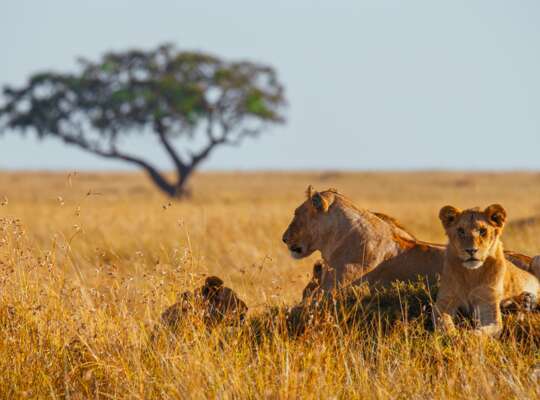Lively, inquisitive and highly social, meerkats are one of the most beloved African animals. It’s easy to see the appeal of these charismatic creatures; immortalised by The Lion King’s Timon and award-winning documentaries like Meerkat Manor. If you dream of observing these African icons up close, here’s everything you need to know about spotting meerkats in the wild.
Where do meerkats live?
Meerkats can be found throughout the desert landscapes of Southern Africa, including areas such as the Kalahari and Namib Desert, parts of Angola and South Africa. Meerkats can be hard to spot in the wild due to their desert camouflaged fur and tiny size – they measure just 12 inches long. Your best chance is during a tailored experience, such as a morning meerkat safari in South Africa’s Oudtshoorn, a key stop on any Route 62 road trip.
What does the Oudtshoorn meerkat encounter entail?
Head out before sunrise into the Oudtshoorn semi-arid desert landscape, which is known for its 20-million-year-old Cango Caves and lies at the foot of the UNESCO-listed Swartberg Mountains. You’ll be accompanied by a guide who knows the area’s meerkats well and will have scouted out which burrow system they’re using the night before. This group of meerkats are wild and free to roam wherever they please, yet they’re also used to people observing them.
Set up your camping chairs a respectful five metres from the burrow and wait for the meerkats to emerge; the sentry will often appear first and assume their iconic stance on hind legs, scanning the horizon for predators. Watch over the next couple of hours as the rest of the mob appear, warming themselves in the sun, foraging and cleaning out their burrow. As you observe, your guide will explain the meerkat’s fascinating behaviour and social structure.
How are meerkats adapted to the desert?
Meerkats are well adapted to life in the desert, occupying rambling, multi-room burrows that stay cool even in the intense heat of day. Their light fur blends into the landscape, providing excellent camouflage from predators. Meerkats also have hooked claws and long noses that allow them to forage for insects; they absorb the tiny amounts of water they need to survive in the arid conditions from roots and fruit.
Members of the mongoose family, meerkats live with other family groups in mobs of up to 30, taking it in turns to guard from predators such as eagles, hawks and jackals. If one is spotted, they elicit a warning call that sends the entire mob scattering into the burrows.
When is the best time to see meerkats?
Meerkats are active throughout the year and can be observed at any time during daylight hours. They’re particularly busy at sunrise, when they emerge from their burrows to warm up under the sun before heading off to forage for insects such as beetles, crickets and worms. Adult meerkats are constantly on the move and can travel over one kilometre per day, returning to their burrows in the evening. The meerkat breeding season stretches from October to April, which is the best time to visit if you’re eager to glimpse baby meerkats.
Inspired?
Want to see Africa's meerkats up close –plus more incredible wildlife? Chat with our travel experts and let's plan your next adventure.
This feature was updated on 14th February 2025. The information within this feature is correct to the best of our knowledge at the time of publication.







_w=24_h=25.webp?v=b71667f1b0243497a8c080edd5d032e11f899818)
_w=24_h=25.webp?v=b71667f1b0243497a8c080edd5d032e11f899818)
_w=24_h=25.webp?v=b71667f1b0243497a8c080edd5d032e11f899818)